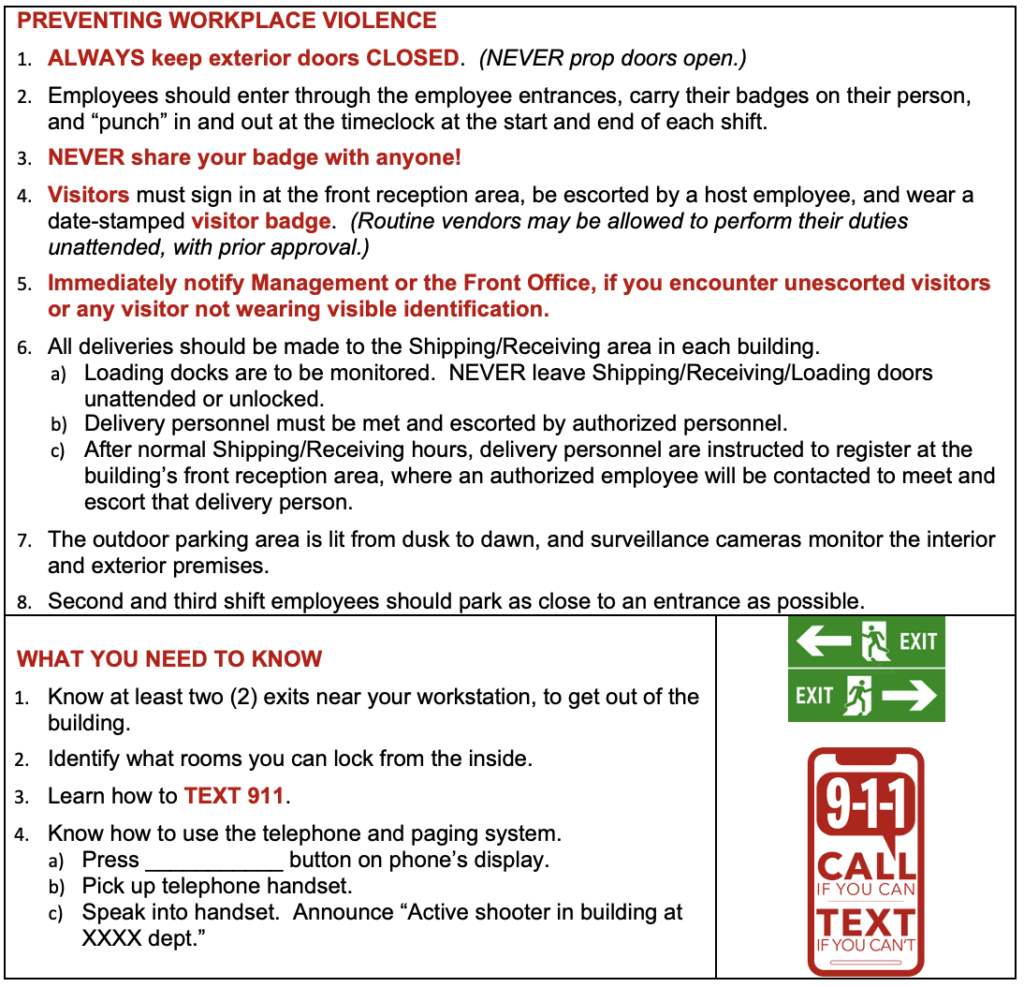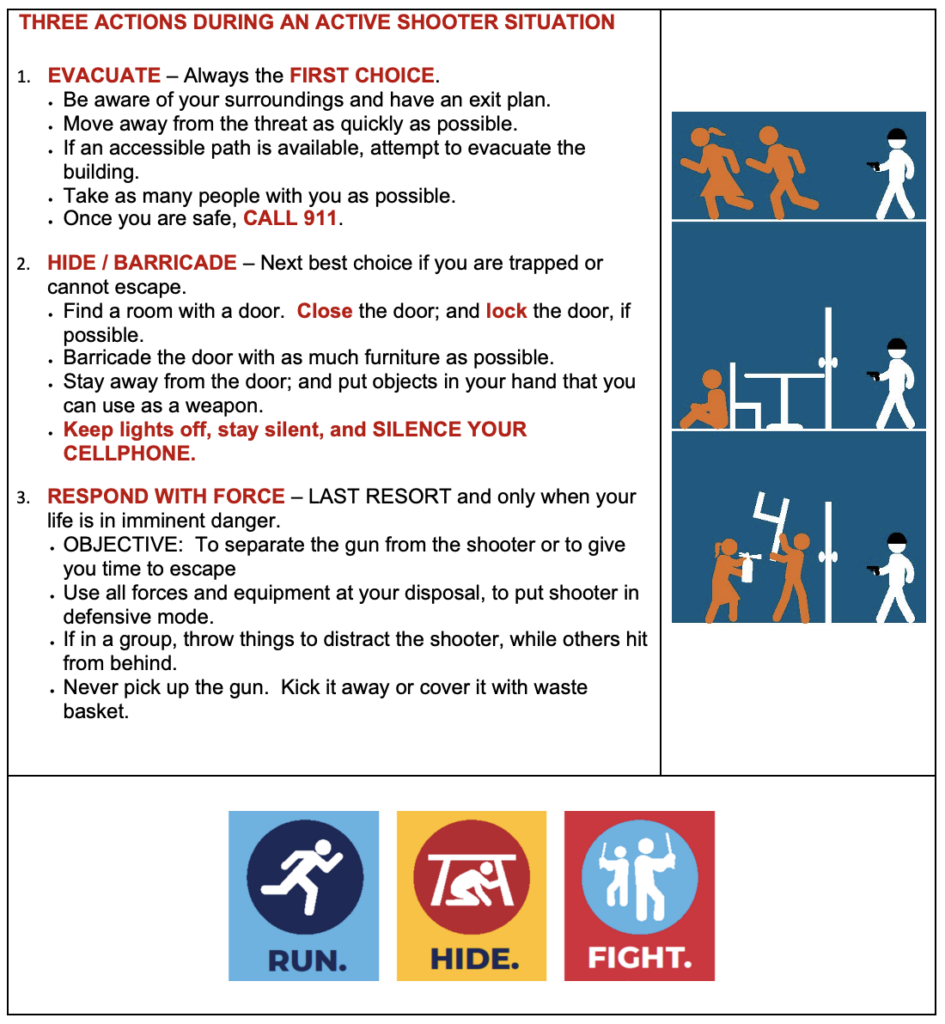 “Protecting Your Business and Your Employees” since 1998.
“Protecting Your Business and Your Employees” since 1998.
By: Darcy Cook, CSHO, SHS, PTA
In 2020, there were more than 20,000 days-away-from-work injuries caused by workplace assaults, according to the Bureau of Labor and Statistics (BLS). And each year there are millions of workers who report beings victims of workplace violence, according to the National Safety Council. It’s a pervasive problem, even if it only makes the news at its most extreme.
As defined by OSHA and the National Institute for Occupational Safety and Health (NIOSH), workplace violence includes harmful acts like verbal abuse, threats, shoving and hitting. Even when no serious physical injuries result, acts like these can lead to low morale, low productivity, high job stress, increased absenteeism, and increased turnover.
The Types of Workplace Violence
When planning prevention and mitigation efforts, consider the categories of people who commit violence in the workplace.
There are four types of workplace violence based on who’s responsible and their relationship to the organization and its employees.
Type One, Criminal Intent: The person acting violently doesn’t have a relationship with the business or its employees. An example of this type is someone robbing a worker at a store.
Type Two, Customer or Client: The person acting violently is a current or former customer or client of the business. A restaurant patron attacking a staff member is an example of this type.
Type Three, Worker-on-Worker: The person acting violently is a current or former employee of the business. An example of this is when one staff member bullies and intimidates another.
Type Four, Personal Relationship: The person acting violently doesn’t work at the business but has a personal relationship with someone who does. Intimidation or bullying of a spouse or partner can fall into this category when it happens in the workplace.
What Can You Do?
- Focus on Preventative Measures
- Train Your Employees
- Create a High-Risk Termination Policy
- Do a Security Assessment of Your Facility
- Write an Emergency Action Plan and Practice
Here is an outline for a safety talk that you can do at your company.






